Goose Breasts with Orange-Ouzo Sauce
December 07, 2007 | Updated June 12, 2020
As an Amazon Associate I earn from qualifying purchases.
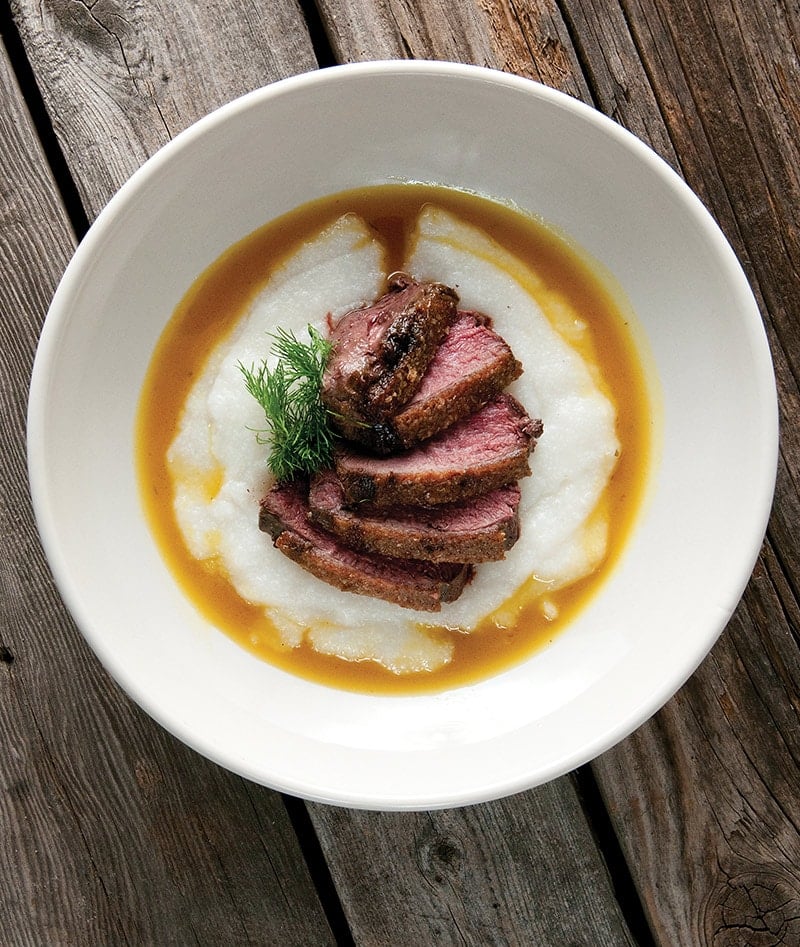
If you are looking for a good goose breast recipe, this is it.
There’s something about waterfowl and citrus that just works. Who hasn’t had the classic, duck l’orange? This is a streamlined, quick and relatively easy version of that recipe, with a Greek twist tossed in: ouzo, an anise-flavored liqueur. (I also make another version, a classic called duck bigarade.)
Ouzo is easily available at most liquor stores, and you can substitute any similar liquor: Pernod, Pastis, Raki, Tsipouro, Sambuca, Anisette, etc. If you can’t drink alcohol, double the amount of chopped fennel and add some fennel or anise seed and you will get close to the flavor.
I designed this recipe for specklebelly geese, which run around 5 to 7 pounds and are often pretty fatty; they’re like a giant mallard. Canada geese will work here, too, as would a fat snow goose.
If you are not a hunter and want to use domestic waterfowl, use a duck instead of a goose, unless you are doubling this recipe: A domestic goose breast is an awful lot of meat for four people. Ideally, a moulard breast would be perfect for this recipe.
I prefer to serve this dish with something simple that will sop up the sauce, such as mashed potatoes or celery root, or polenta; I used white polenta (grits) for the photo.
Goose Breasts with Orange-Ouzo Sauce
Ingredients
- 2 wild goose breast or domestic duck halves or 1 half of a domestic goose breast
- Salt
- 1 tablespoon duck fat, butter or olive oil
- 1/2 cup chopped fennel
- 1 shallot, minced
- 1 small hot chile, like a Thai or Tabasco, sliced in half lengthwise
- 1 shot glass of ouzo, or other anise-flavored liqueur
- 1 cup goose, duck or chicken broth
- Juice of one orange, about 1/2 cup
- Small bunch of fennel fronds for garnish
- Freshly ground black pepper
Instructions
- If you are using domestic duck or goose breast, or if your wild goose breast is very fatty, score the skin side in a crosshatch pattern with your sharpest knife. You want about five to seven cuts on each angle and be sure to not cut into the meat. Skip this with a skinny goose. Salt the meat well and let them stand for 30 minutes at room temperature.
- For most wild goose breasts, heat the duck fat in a large saute pan over medium-high heat and when it's hot, place the breasts skin side down. Turn the heat to medium; you want to hear a gentle sizzle, not an inferno. If you are working with very fatty breasts, turn the heat to medium and lay the goose breasts down immediately -- as the heat increases, it allows more fat to render out of the pan. Take your time with this side, which can take up to 10 minutes. When the skin is a lovely brown, flip the breasts, turn the heat up to medium-high and sear the cut side. Cook for 3 minutes, or until the meat is rare to medium. Remove and rest on a cutting board.
- To make the sauce, put the shallot, chile and chopped fennel in the pan and saute for 2 to 3 minutes, stirring often. Do not let the veggies brown. Take the pan off the heat and add the ouzo. It may flame up, so be careful. Scrape any brown bits off the bottom of the pan and let the ouzo cook down by half. Add the duck stock and orange juice and a little salt and boil this furiously until a spoon passed through the sauce leaves a trail. Turn off the heat and, if you want, strain the sauce through a fine-meshed sieve to remove the solids.
- Slice goose breast on the diagonal. To serve, pour a little sauce on the plate and arrange goose slices skin side up on them. Garnish with some fennel fronds and ground pepper.
Nutrition
Nutrition information is automatically calculated, so should only be used as an approximation.
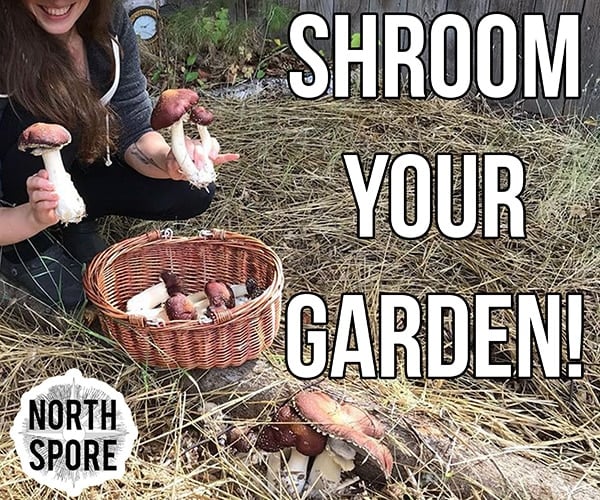
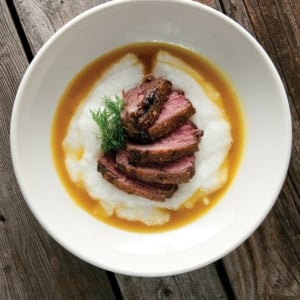
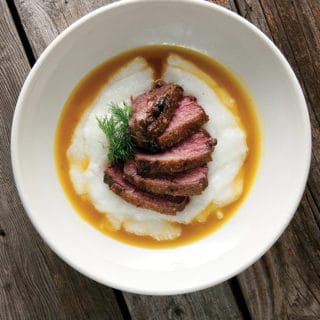
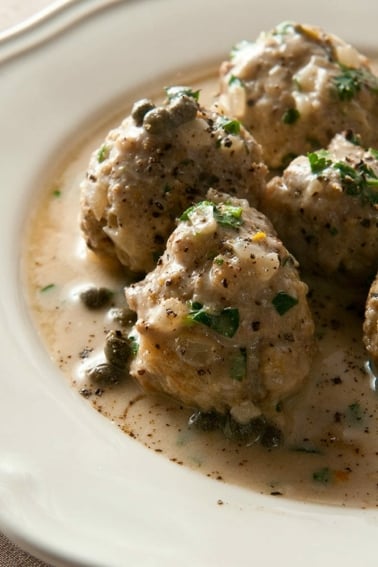
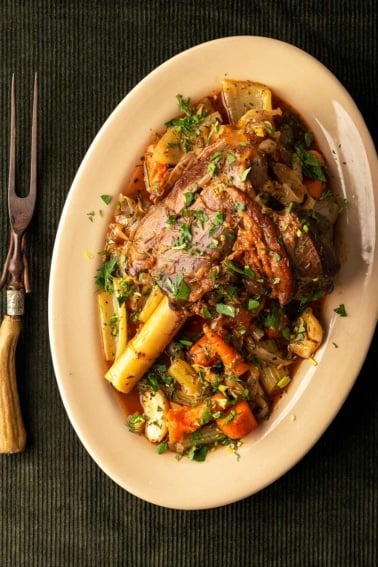
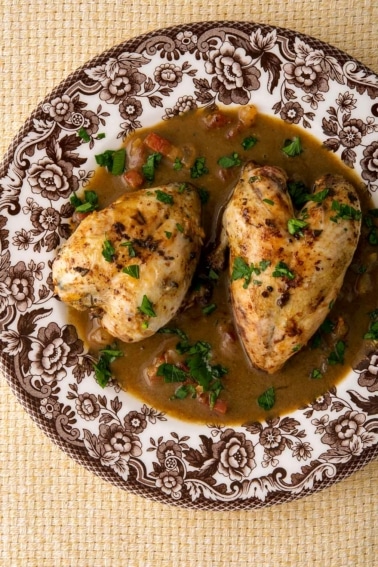
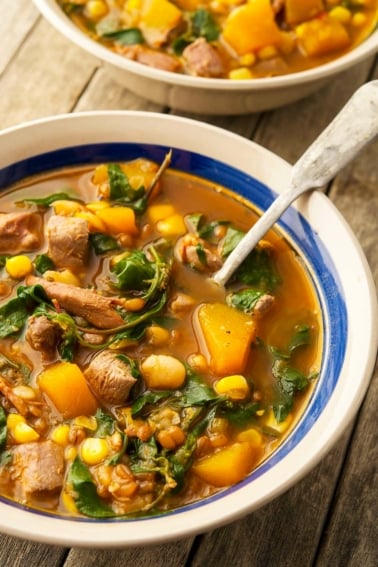
I am so thankful to have stumbled on your website. It has been so enjoyable to read. Can you tell me what you plated the meat on top of other than the sauce? The picture features something white?
Kerri: Thanks for the kind words! It’s plated on grits.
Thank you so much! I look forward to preparing this dish.
I have a goose breast in my freezer and would like to try this recipe. I am not a fan of the black licorice flavor of ouzo. Do you have any suggestions for a substitute? I was thinking maybe amaretto but am afraid that might be too sweet.
Tonia: I’d use brandy.
Normally not crazy about goose, but I had a whole goose shot in northern Idaho in the freezer. Figured the strong liquorice flavor would mask that Goosy flavor. Even though there were no grain fields for a hundred miles or so, the bird had about half an inch of fat on it. We added an extra pepper and some garlic and this was every bit as good as the mallards we shot this year. Like the others have stated, the citrus and liquorice was absolutely stellar with the goose served over roasted root veggies.
Excellent recipe!!!! Couldn’t get the licquor so doubled the fennel. Also doubled the hot peppers, using seranos.
Made a version of this recipe but substituted a quarter cup of chopped tarragon in place of the fennel, and chicken broth in the place of stock, just because I had those already in the kitchen. I used a recently taken canada goose that wasn’t particularly fat but the meat couldn’t have turned out much better, even a guest who was cringing as they took the bite relaxed their face immediately and stated it was delicious and tasted very similar to good beef. I was very worried about the sauce being too strongly anise flavored and was having a hard time picturing the flavor combination working before trying this recipe. My worries were unfounded. The Serrano pepper and orange juice really work with the anise flavor. Only recommendation would be to double the sauce recipe depending on the size of the bird. I got distracted and reduced mine a little too much but I still don’t think it would have been enough for both the goose breast especially as rich and tasty as it turned out.
Finally made this last night with the breasts of a small domestic duck because I’m out of wild duck and goose. All I can say is that it’s fantastic! It’s hard to believe that something so simple can be so good. I thought the fennel/anise flavor could be too strong, but it’s perfect. This will he a fall staple in our house!
Our neighbors gave us 4 Canada goose breasts and I thought this recipe looked delicious. However they came with the skin removed, and they look very lean. Do I need to add fat to the recipe, and where? Should I brine them overnight, or soak in milk? I think this will make a lovely Christmas eve dinner, so let me know what you think.
Nancy: Well, you should be fine. Cook them like a steak, though, i.e., medium to medium-rare. Slice it thin when you serve it, because Canada geese can sometimes be tough. Think roast beef. And as for adding fat, yes, you will need to when you sear them in the pan.
Love the site. I’ve read that you don’t recommend roasting a whole Canada goose. I’m assuming you would prefer to use the breast for this recipe and the confit the legs. Do you do anything with the carcass in terms of a soup or stock? Was just curious about that and also curious as to why Canadien geese are not good roasted. Not challenging the idea but just curious. thank you.
Glenn: Exactly. Stock for the carcass. Theoretically you could roast a whole Canada goose IF it’s a young bird. But these geese are often several years old — some are as old as 20! — and that makes for a very, very tough bird.
Just completed this recipe and I must say that it is the best goose that I have ever tasted. Fabulous. Thank you.
Hank, I have been an admirer of your blog for some time now, both for the reading content and wonderful pictures. I got my first duck yesterday (beautiful mallard hen), and cooked this up for dinner. I couldn’t believe how good it was! Thanks for the great recipe and looking forward to trying more.
Another great recipe, by Mr. Shaw, and another example of excellent food photography by Holly A. Heyser. So much harder than it looks, and essential for conveying the beauty and potential taste of a dish.
My husband and our rookie Flat-coated retriever, Stella, brought home three specks and a snow goose this weekend. I am always looking for a fresh and scrumptious way to prepare wild water fowl because we’ll have to wait another nine months before we are lucky enough to have this chance again. I was so excited to find this recipe. It paired brilliantly with the bottle of Mac Murray Pinot Noir from Sonoma. I didn’t strain the sauce and the texture complemented the creaminess of the polenta. I will definitely be adding this to my favorites!
Strange veggies? No problem. I got just the thing for ya, Loo. Give me a couple days…
Hi,
I came over from Kevin Kossowan’s blog to take a look see. Seems you are off to a great start and I love the premise of your blog. I’ll be back 🙂 Good luck and fun!
Recipes for strange vegetables please! I’ll even take strange recipes for normal vegetables!